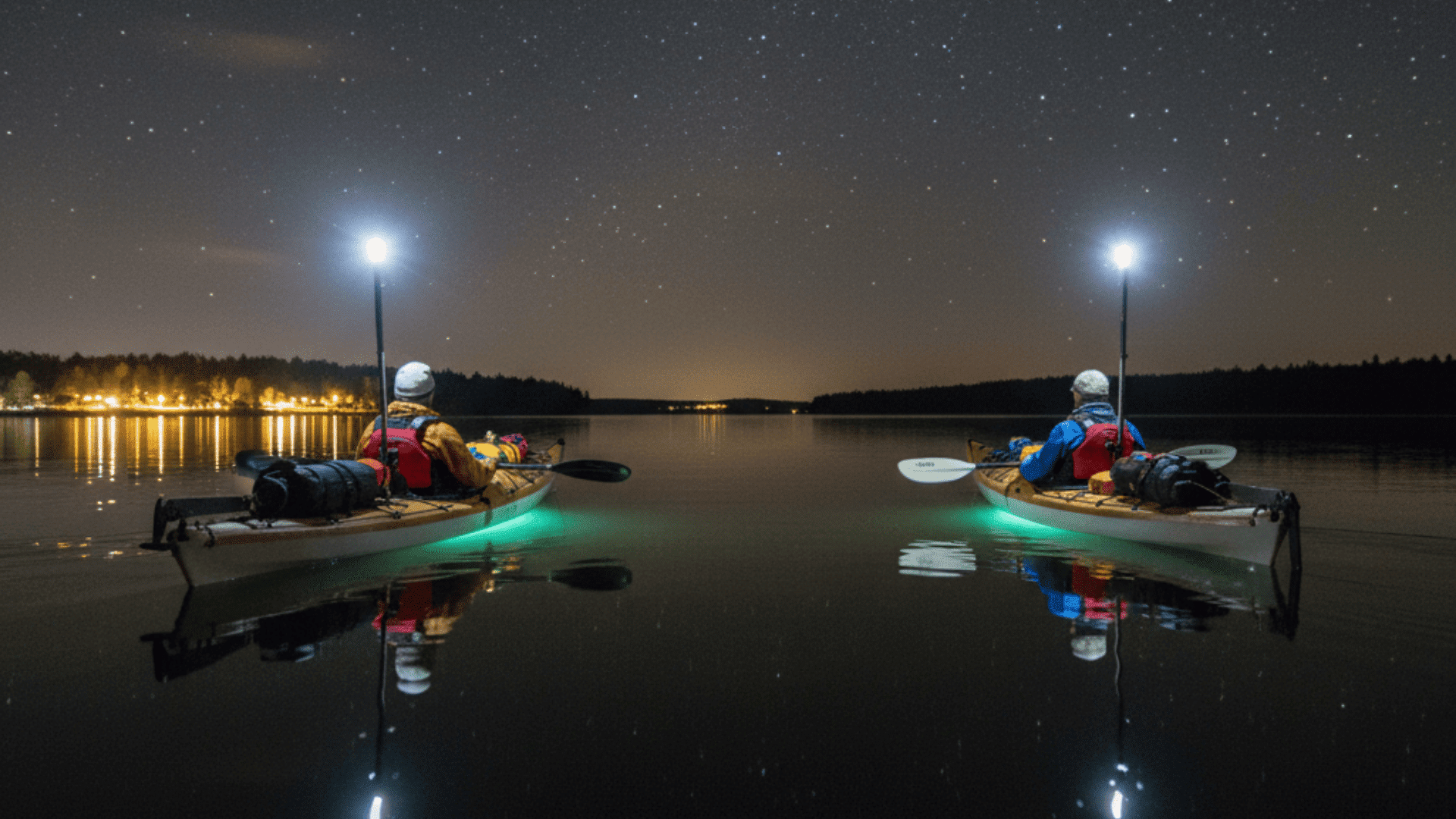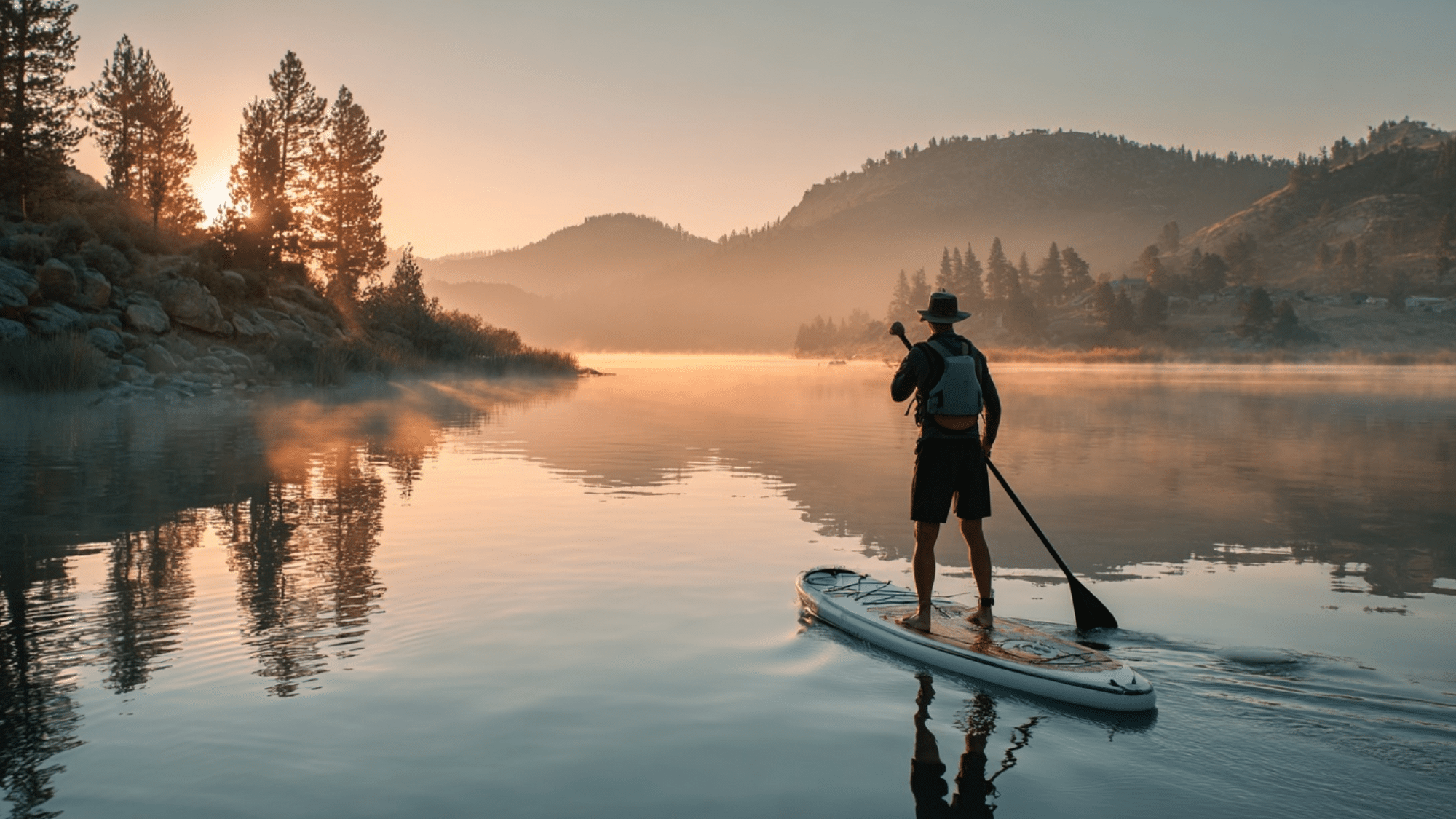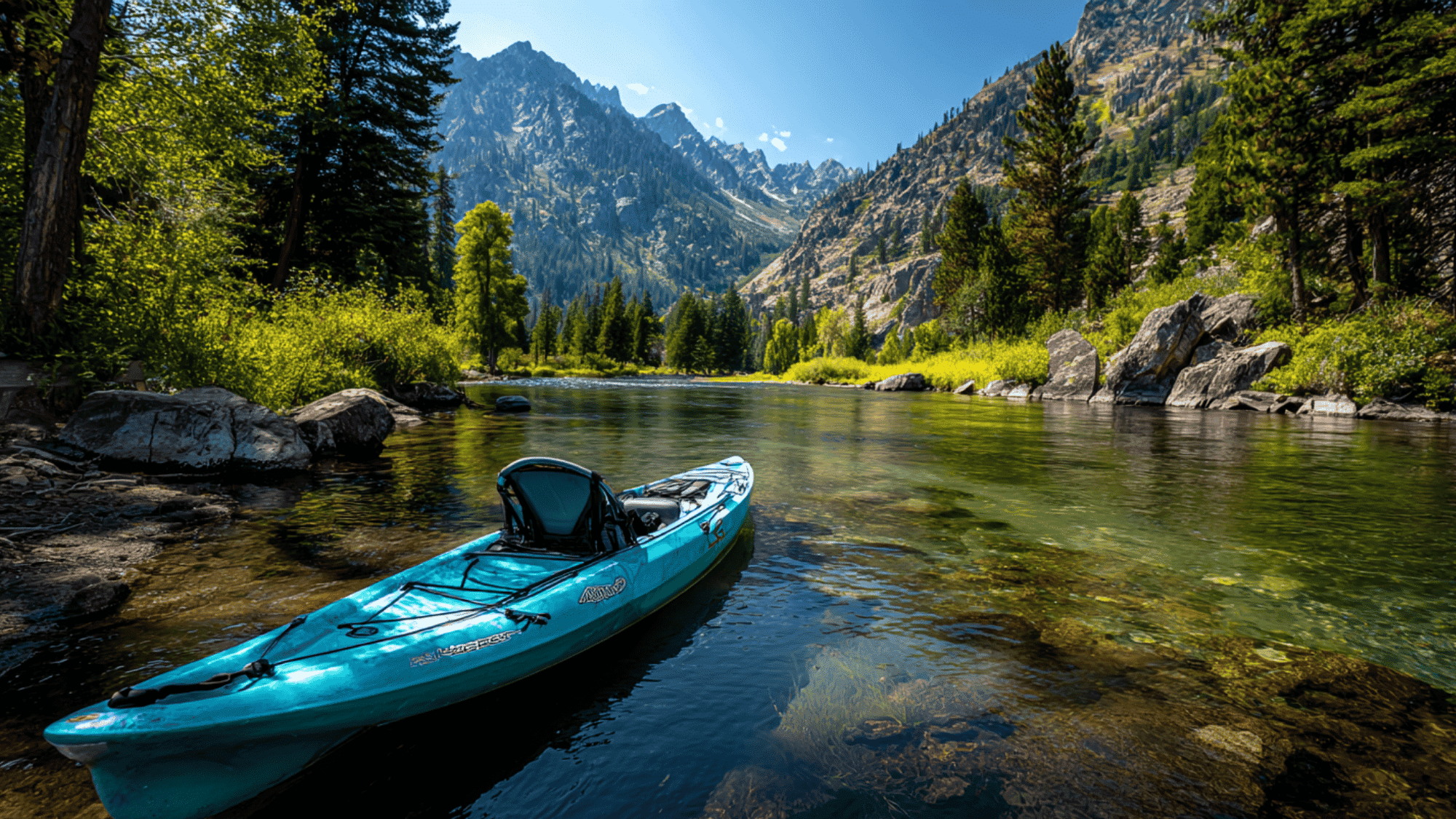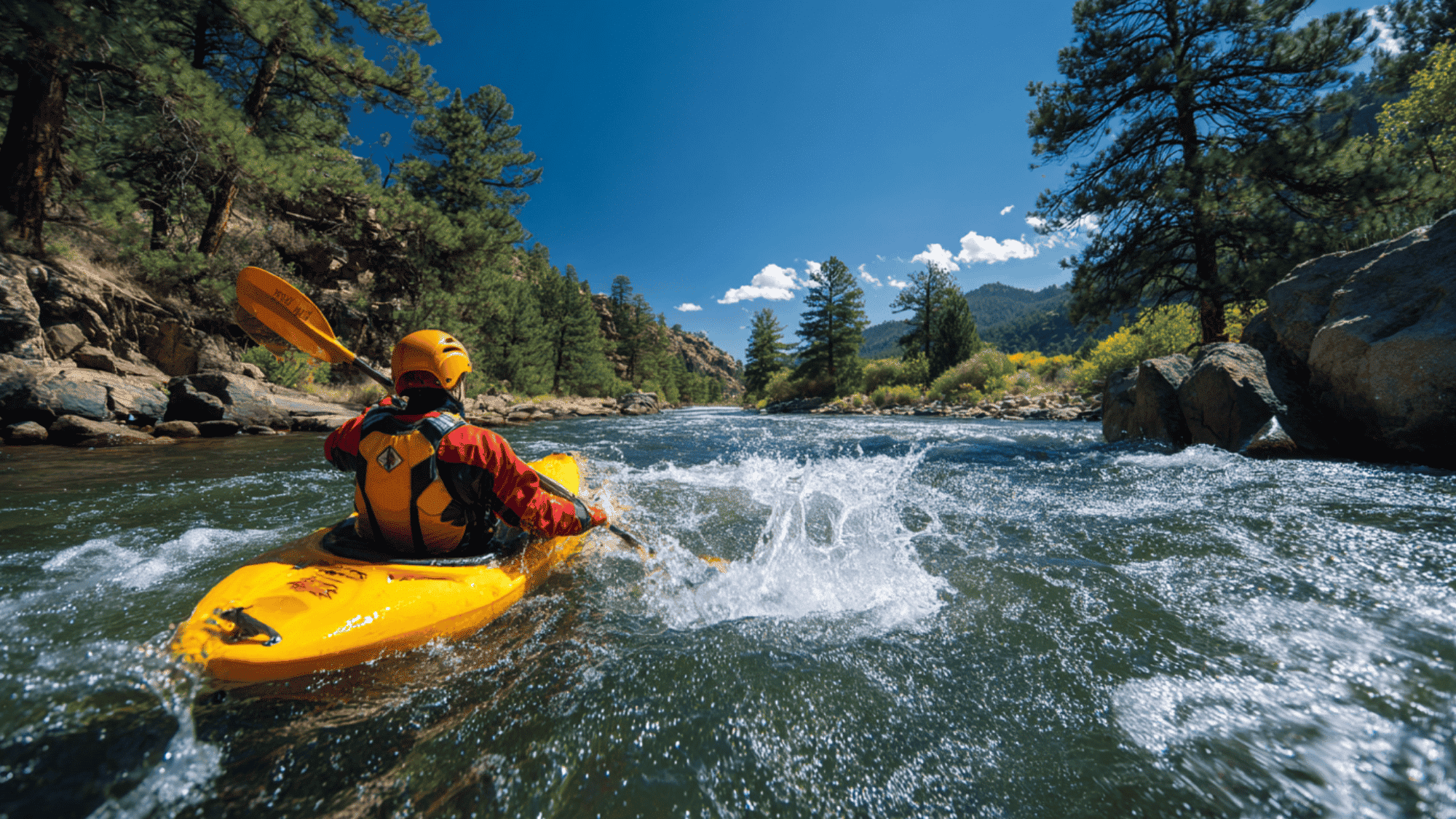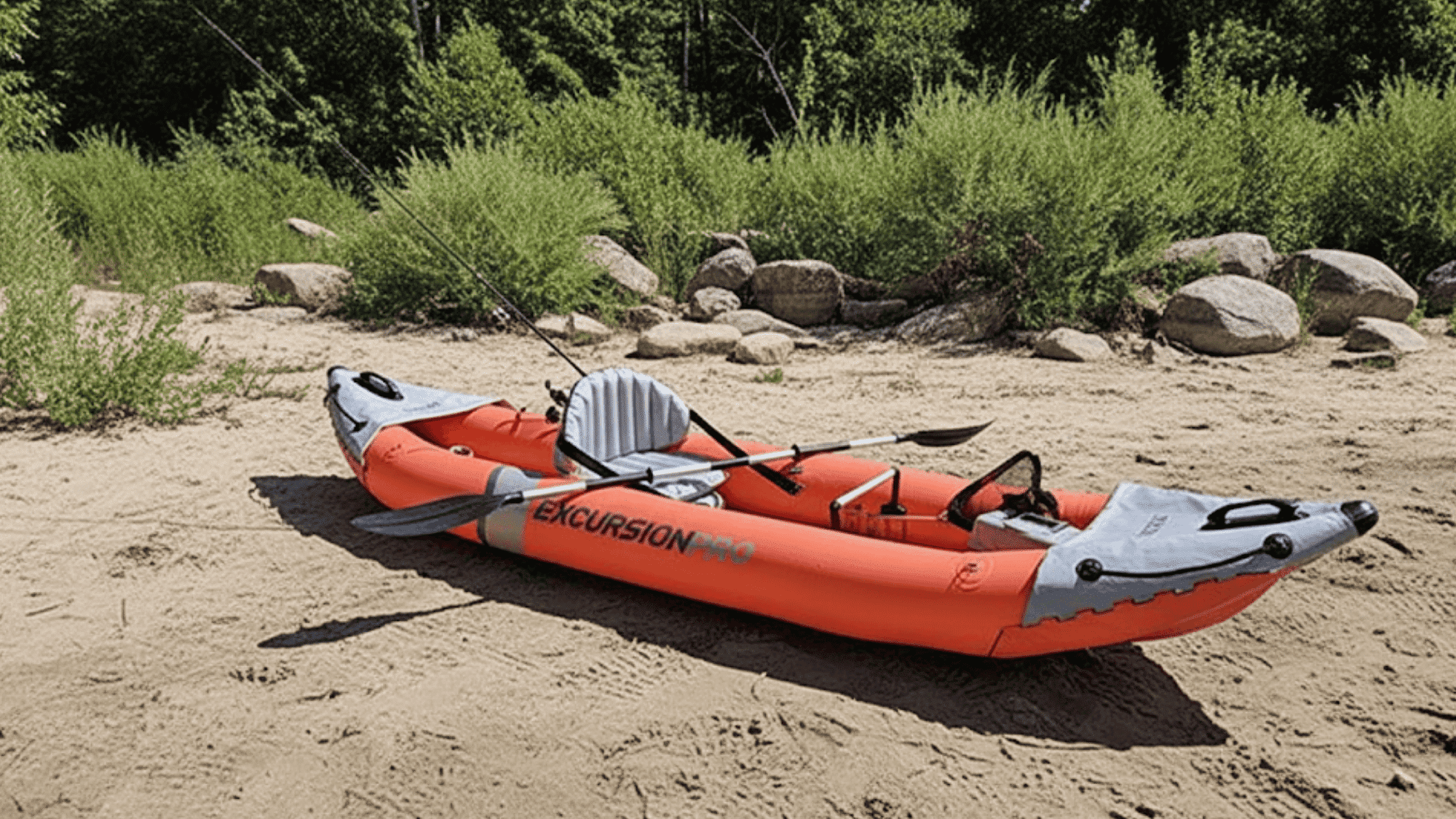Night paddling demands proper lighting equipment. Between Coast Guard regulations, mounting options, and dozens of products claiming to be “the best,” choosing the right kayak lights can feel overwhelming.
This guide cuts through the confusion with real-world testing and expert recommendations.
We’ve evaluated the top kayak lights based on visibility, durability, battery life, and user reviews to bring you the best options.
Whether you need a simple all-around white light for legal compliance or a complete lighting system for serious night fishing, you’ll find practical recommendations that actually work on the water.
What Do the Rules Actually Say? (The Simple Version)
In the United States, kayaks are considered “vessels under oars,” meaning you must carry a white light at night to prevent collisions.
While you could wave a flashlight when boats approach, mounting a 360-degree white light above your head is safer and more practical.
Your light should sit behind you and high enough that your body doesn’t block it.
If you paddle coastal waters or the Great Lakes, you’ll also need visual distress signals, either three flares or a Coast Guard-approved electronic SOS light.
Always choose USCG-compliant or ABYC-approved lights to ensure they’re bright and durable enough for marine conditions. Remember, rules vary internationally, so check local regulations before paddling abroad.
Types of Kayak Lights (And When to Use Each One)
Not all kayak lights do the same job. Some help other people see you, some help you see where you’re going, and some are just for fun (or fishing). Let’s break down the main types.
1. All-Around White Lights (Your Main Safety Light)

This is your legally required light that shines 360 degrees, so boats from any direction can spot you. Most paddlers mount these on a tall pole or mast behind their seat, putting the light above their head.
Many use a flag mast that holds a safety flag during the day and an LED light at night.
2. Red and Green Sidelights (Usually Not Needed)

These port and starboard lights help other boaters determine which direction a vessel is heading.
While you can use them on kayaks, many experts recommend skipping them because powerboat captains might mistake you for a larger, faster boat and misjudge your speed or size.
Keeping it simple with just white light is often safer.
3. Deck Lights and Headlamps (For Your Work Area)
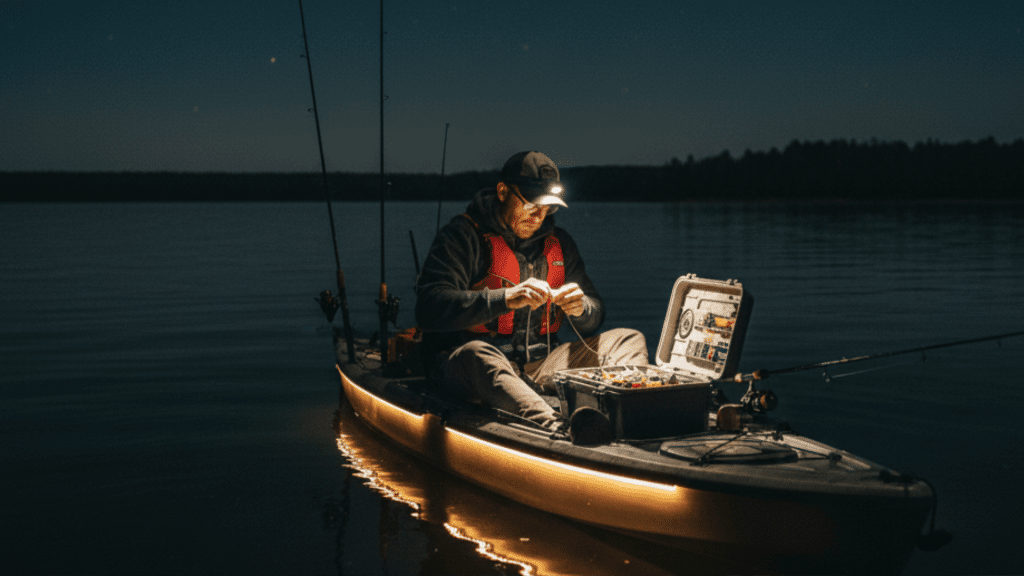
These help you tie fishing knots, dig through gear, or land fish without fumbling in the darkness. A headlamp keeps your hands free and shines wherever you look, while small LED deck lights clamp to your kayak to illuminate your workspace.
Remember: these are extras, not substitutes for your required white safety light.
4. Electronic Distress Lights (Your Emergency Signal)
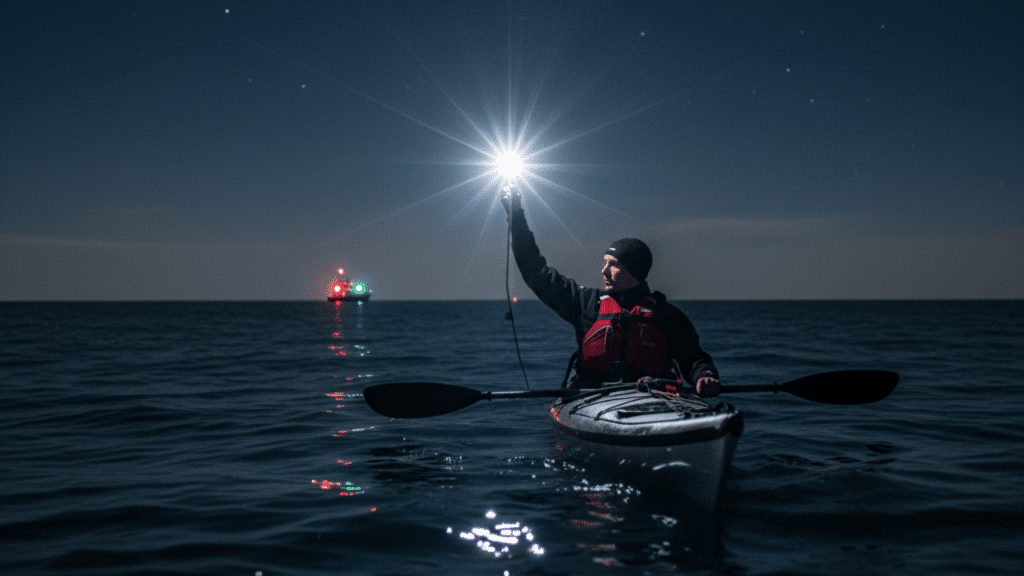
These Coast Guard-approved lights flash an SOS pattern as visual distress signals. They’re reusable, don’t expire as quickly as traditional flares, and carry no fire risk.
If you paddle coastal waters or the Great Lakes at night, you’re required to carry VDS, making electronic distress lights an easy, practical option.
How We Picked the Best Kayak Lights
With so many lights on the market, how do you know which ones are actually good? We looked at several key factors that matter most to real paddlers.
- Compliance and Visibility – We focused on USCG-compliant or ABYC-approved lights that meet Coast Guard standards. Lights rated visible from at least 2 nautical miles away made the cut.
- Mounting Security and Height – Solid mounting systems (track mounts, rod-holder bases, tension cables, or strong suction cups) are essential. The light needs to sit above your head to be visible all around without falling off in choppy water.
- Battery Life and Power – We checked realistic runtime claims and preferred lights using common batteries (AAs or AAAs) or dependable rechargeable systems. Bonus points for low-battery warnings.
- Weatherproofing and Durability – Good IP ratings, corrosion-resistant materials, and the ability to float matter when lights face splashing water, rain, and occasional drops on concrete ramps.
- Community Validation – We looked at which lights keep appearing in paddling magazines, buyer’s guides, and kayak fishing forums. Year after year, recommendations from experienced paddlers signal real-world reliability.
The Best Kayak Lights for 2025
Here are our top picks based on the criteria above. Remember, always double-check that any light you choose meets your local legal requirements.
1. YakAttack VISICarbon Pro
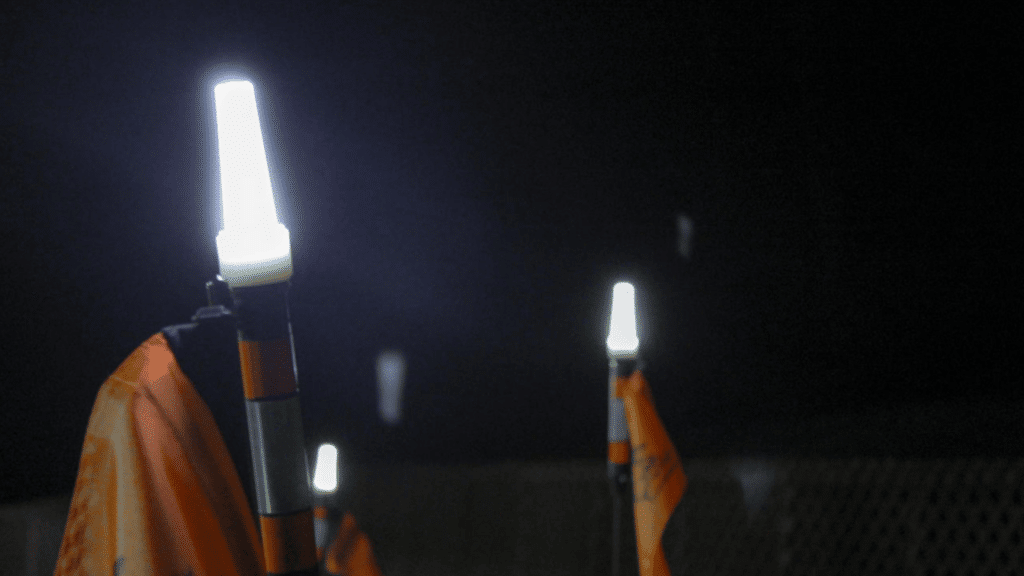
The gold standard for kayak mast lights. Features a collapsible 48-inch carbon fiber mast with integrated flag for day and night visibility.
Packs down to about 14 inches and mounts to track systems or rod holders.
Price Range: $80-$120
| Pros | Cons |
|---|---|
| Carbon fiber is lightweight and durable | Higher price point |
| Flag and light combo for 24/7 visibility | Requires a track system or a rod holder |
Best for: Overall best choice for most kayakers.
2. RAILBLAZA Illuminate i360
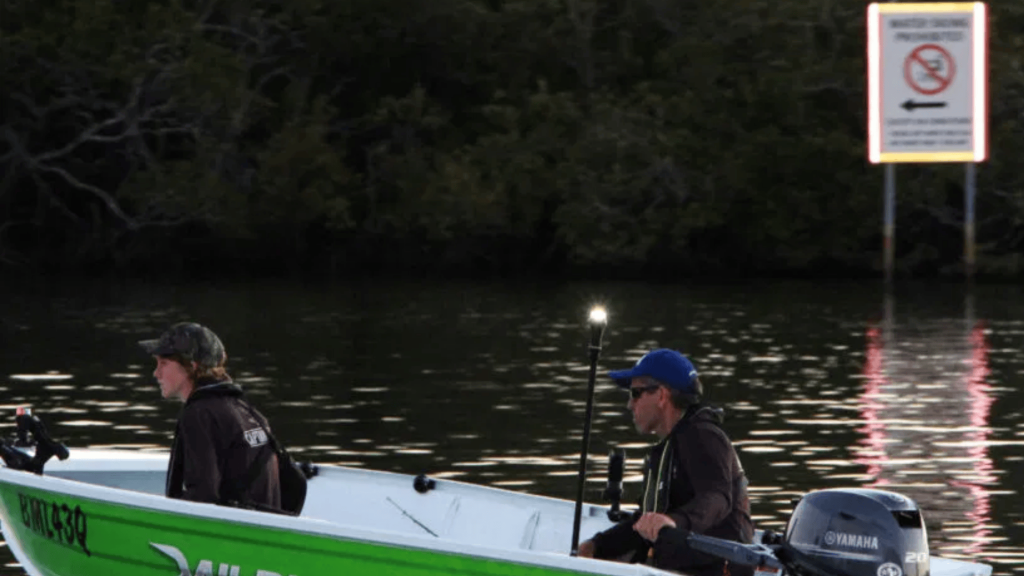
A solid, budget-friendly, all-around white navigation light rated visible from 2 nautical miles. Runs for 25 to 160+ hours, depending on brightness mode, and floats if dropped in water.
Price Range: $25-$40
| Pros | Cons |
|---|---|
| Excellent battery life and multiple modes | Light only, no mast included |
| Works with the RAILBLAZA mount ecosystem | Requires a separate mounting solution |
Best for: Budget-conscious paddlers who want reliable safety lighting
3. RAILBLAZA Visibility Kit II

Complete bundle with i360 light, safety flag, and mount, everything a new night paddler needs in one box. Ready to install and meets legal requirements right out of the package.
Price Range: $60-$85
| Pros | Cons |
|---|---|
| All-in-one solution for beginners | More expensive than buying light alone |
| No guessing what you need | Limited to the RAILBLAZA mounting system |
Best for: First-time night paddlers or anyone who wants a complete solution
4. Kayalu Kayalite
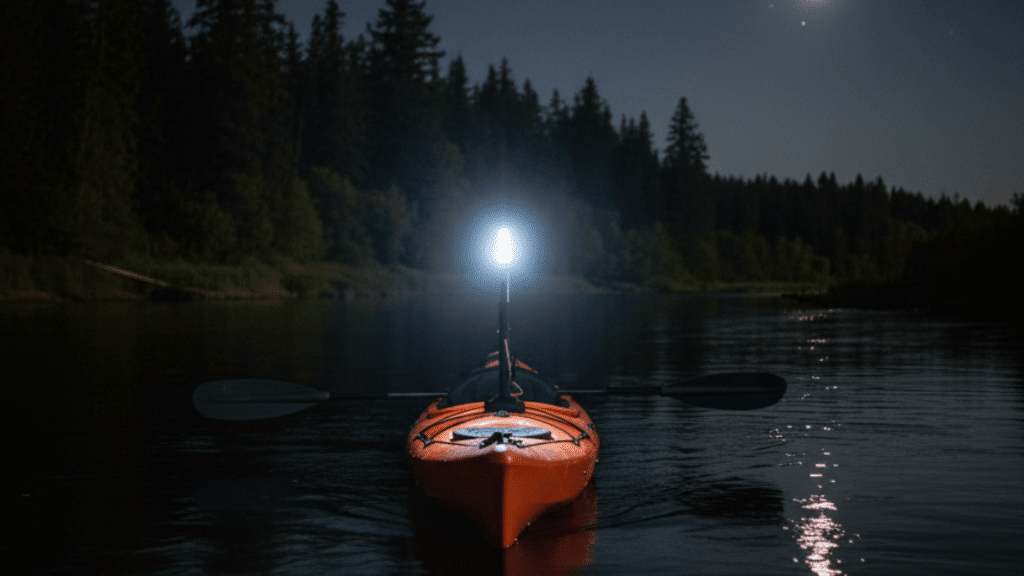
Perfect for kayaks without track systems. Uses a tension-cable “Secure-Attach” system that clips to pad eyes or deck lines and tightens with bungee and jam cleat, no drilling required.
Price Range: $50-$70
| Pros | Cons |
|---|---|
| No drilling needed, works on any kayak | The tension system requires proper adjustment |
| Flexes instead of breaking when bumped | Not as quick-release as track mounts |
Best for: Kayaks without track systems or renters who need a no-drill option
5. Scotty 835 SEA-Light

Portable light on a suction-cup base, ideal if you can’t drill holes. The ACR C-Light module is Coast Guard/SOLAS approved with over 30 hours of runtime.
Price Range: $35-$50
| Pros | Cons |
|---|---|
| Zero installation, completely portable | Suction may fail if not cleaned properly |
| Coast Guard/SOLAS certified | Requires a smooth mounting surface |
Best for: No-drill installations on smooth hull surfaces
6. Navisafe Navi Light 360
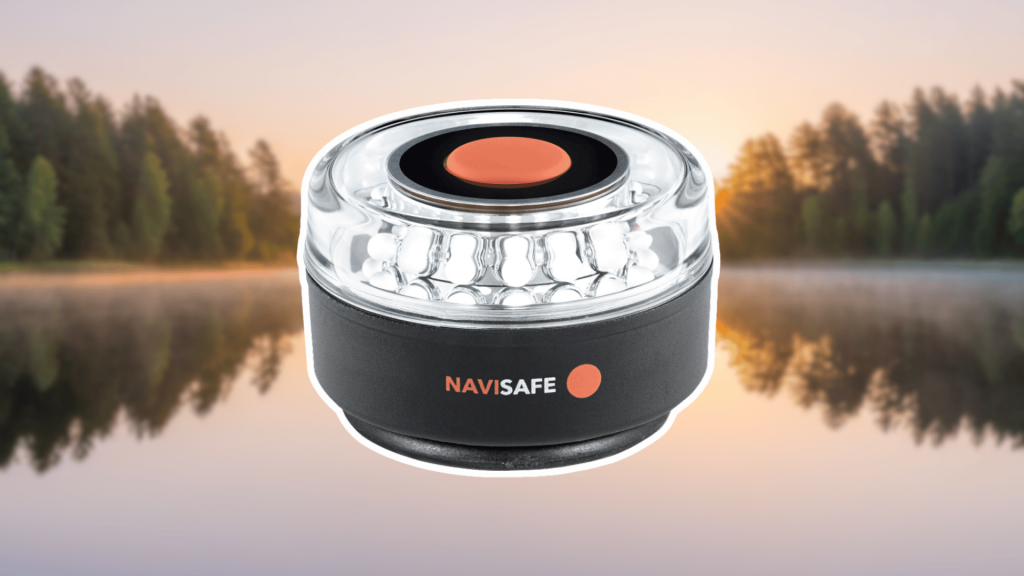
Premium portable light rated visible from 2 nautical miles with multiple mounting options, including magnetic and suction bases. Floats and offers various brightness modes.
Price Range: $45-$65
| Pros | Cons |
|---|---|
| Versatile with multiple mount options | Higher price for a portable light |
| Excellent build quality and reliability | It may be overkill for single-kayak owners |
Best for: Paddlers who want a high-quality portable light that works across multiple boats
7. Attwood LightArmor Portable LED Navigation Light
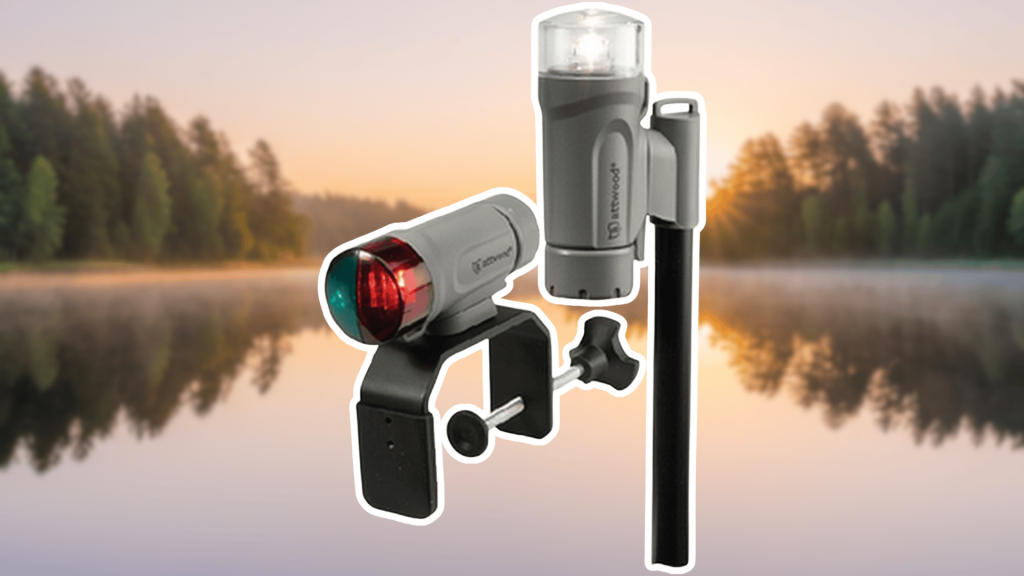
Durable all-around white LED light with a suction cup mount designed for small boats and kayaks.
Features 360-degree visibility, a battery power indicator, and weatherproof construction that meets USCG requirements.
Price Range: $30-$45
| Pros | Cons |
|---|---|
| USCG-compliant with excellent visibility | Suction mount requires regular checking |
| Battery indicator prevents surprises | Shorter runtime than some competitors |
Best for: Paddlers wanting an affordable, compliant portable navigation light
8. Paddlers Supply LED Deck Light
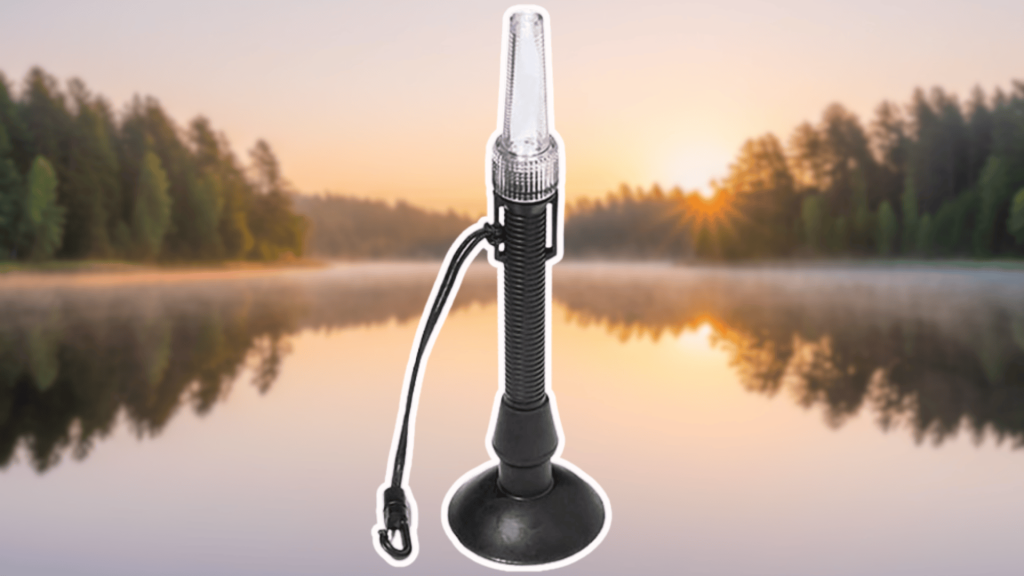
Telescoping deck light with suction base providing bright, focused illumination for your work area, perfect for tying knots, changing lures, or digging through tackle boxes.
Price Range: $20-$35
| Pros | Cons |
|---|---|
| Great for detailed work and fishing tasks | Not a navigation light, just task lighting |
| Adjustable height and angle | Still need a separate 360° safety light |
Best for: Task lighting while fishing or working on deck
9. NOCQUA Spectrum P2

Under-glow LED system that straps around your kayak, lighting up the water in various colors. Green is popular for attracting baitfish. Includes SOS strobe mode for emergencies.
Price Range: $90-$130
| Pros | Cons |
|---|---|
| Eye-catching and attracts fish | Not a substitute for the required nav light |
| Multiple color options and SOS mode | Adds extra gear to manage |
Best for: Anglers who want fish-attracting under-glow lighting
10. Sirius Signal C-1004 eVDSD
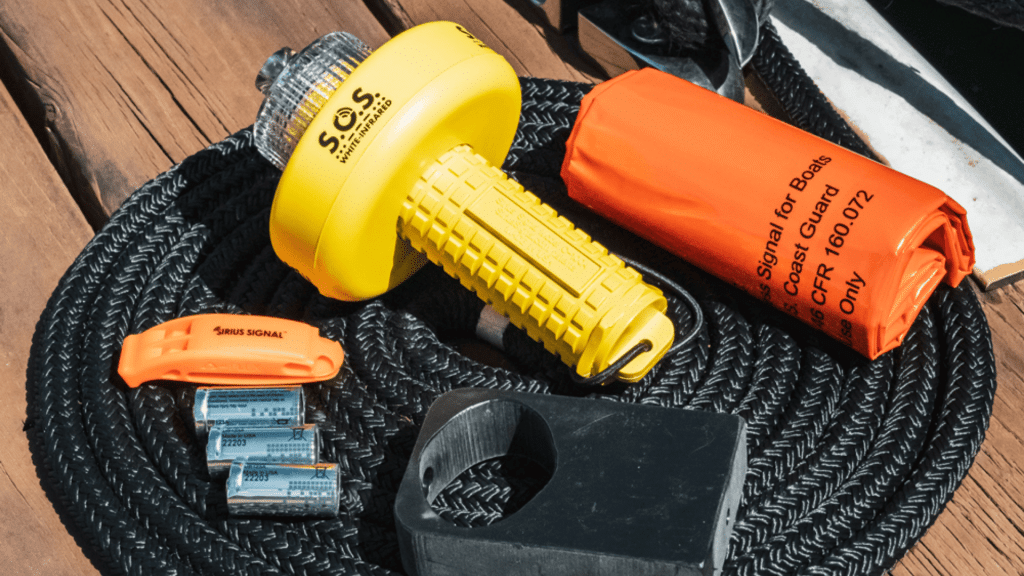
Electronic visual distress signal meeting Coast Guard requirements as a flare substitute. Flashes SOS pattern, is waterproof, and lasts for years without expiring like pyrotechnic flares.
Price Range: $60-$80
| Pros | Cons |
|---|---|
| Reusable and doesn’t expire quickly | Only for emergency signaling, not navigation |
| No fire risk like traditional flares | Additional cost beyond navigation lights |
Best for: Meeting VDS requirements on coastal and Great Lakes waters
11. Guardian Angel Wearable Light

Wearable personal beacon using magnets to attach to clothing, PFDs, or kayak surfaces. Many anglers clip them to a bow or a milk crate for extra visibility.
Price Range: $15-$30
| Pros | Cons |
|---|---|
| Versatile attachment options | Small size may limit the visibility distance |
| Adds an extra layer of visibility | Battery replacements are needed frequently |
Best for: Extra personal visibility; backup lighting
12. Basin Boat Lighting “PaddleBird” System

All-in-one system combining powerful flood lights, optional navigation LEDs, and a horn, all controlled through a smartphone app. Tournament-level lighting control and brightness.
Price Range: $200-$350
| Pros | Cons |
|---|---|
| Maximum control and brightness options | Expensive and complex setup |
| App-controlled for convenience | Overkill for casual paddlers |
Best for: Serious anglers who want maximum lighting control
What the Experts All Agree On
We read dozens of kayak lighting guides, forum threads, and safety articles. Here’s what the experienced paddlers consistently recommend:
| Expert Recommendation | Why It Matters |
|---|---|
| Always carry a white light | Legally required and could save your life. Use a 360-degree mounted light with the required VDS for coastal/Great Lakes waters. |
| Mount it high, mount it behind you | Light needs to be 40-48 inches above your head and behind your seat so your body doesn’t block visibility from any direction. |
| Add a flag for daytime visibility | Bright orange or yellow flag makes you visible during the day; combined flag/light systems cover 24/7 safety needs. |
| Don’t blind everyone | Super-bright deck lights destroy night vision. Use task lights only when needed, keep them pointed down, then shut them off. |
| Test everything at home first | Set up at home, sit in your kayak at night in the driveway, and verify lights are visible from all angles before your first paddle. |
How to Install Lights on Your Kayak (Step-by-Step)
Ready to set up your own kayak lighting? Here’s a simple walkthrough that works for most setups.
- Step 1: Plan Your Layout – Choose a 360-degree mast (40-48 inches tall) and position it behind your seat, above your head, clear of fishing rods or any gear that might block visibility.
- Step 2: Choose and Install Your Mount – Select your mounting method (track mounts, tension-cable systems, suction cups, or permanent bolts) and install following manufacturer instructions, ensuring it’s secure and positioned correctly.
- Step 3: Test Before Finalizing – Sit in your paddling position and verify the light is visible from all angles without being blocked by your body or gear; have a friend walk around to confirm 360-degree visibility.
- Step 4: Power Up and Add Extras – Insert fresh batteries (carry spares), or for 12-volt systems, connect a marine battery with an inline fuse and a waterproof switch; add optional headlamp or deck lights for task lighting.
- Step 5: Pack Safety Equipment – Include required visual distress signals (three unexpired flares or Coast Guard-approved electronic distress light) if paddling coastal waters or the Great Lakes, and store them where you can access them quickly.
- Step 6: Final System Check – Test all lights, confirm mounts are tight, verify battery levels, pack spares, and do a complete darkness test in calm water close to shore before your first real night paddle.
Your Final Safety Checklist
Before you head out for any night paddle, run through this quick checklist:
Required Safety Gear
Recommended Extras
Pre-Launch Check
|
Wrapping It All Up
Paddling your kayak at night can be magical. The water is often calmer, the fishing can be incredible, and there’s something peaceful about gliding across dark water under the stars. But it comes with serious responsibilities.
The right kayak lights keep you legal, visible, and safe. A simple 360-degree white light on a mast handles the legal requirements and helps other boaters see you from any direction.
Add task lighting for working with gear, maybe some under-glow for fun or fishing, and always carry proper visual distress signals if you’re on coastal waters.
Test everything at home, check your gear before every trip, and always let someone know your paddle plan.
The bottom line? Good lighting isn’t expensive, it isn’t difficult, and it could save your life. Don’t skip it.


